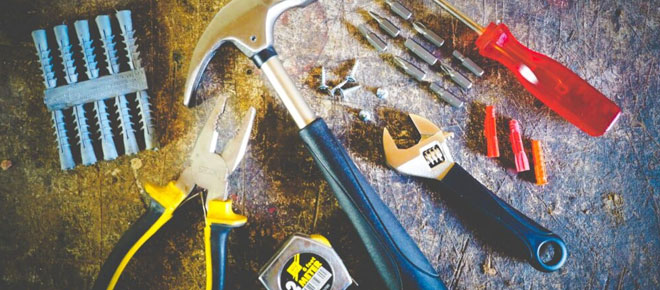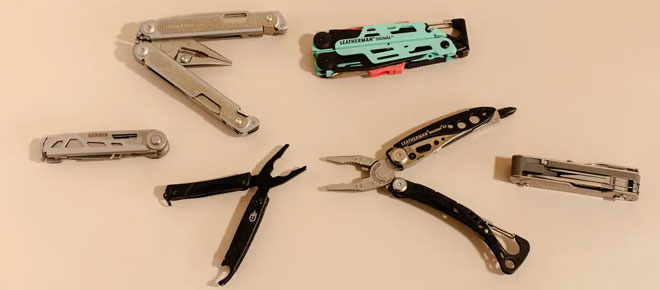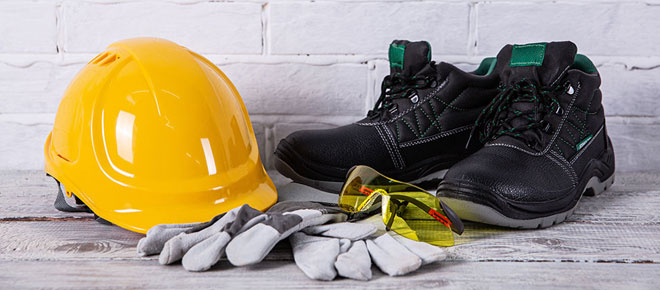Tips for Choosing the Right Hand Tools for Your Needs

Whether you're new to woodworking or a seasoned pro, a good set of hand tools can make a project go smoother. But choosing the right tool for your needs can be tough.
The right tool can help you reduce the risk of injuries, such as carpal tunnel syndrome or tendonitis. Thankfully, some simple tips can help you select the best hand tools for your projects.
Know Your Needs
When it comes to hand tools, knowing your needs can be the key to choosing the right ones for you. After all, the right tool can make all the difference in getting your project done. However, with so many different types of hand tools out there, it can be difficult to know which ones are right for you and which ones to avoid.
Luckily, some tips can help you choose the right tools for your needs. First, you need to understand what your needs are and what type of work you do. For example, if you work with wood, then you will need different tools than if you work with metal.
Additionally, you need to consider the size of your projects. Small projects can be handled with less expensive tools, but large projects require more professional tools. If you don't have the right tools, you could end up hurting yourself or damaging your material.
Another important factor to consider when it comes to choosing the right-hand tools is how often you use them. If you use them frequently, then it's a good idea to buy quality hand tools that will last for a long time.
It's also a good idea to invest in a quality metal toolbox. These boxes are sturdy and can hold a variety of different tools, including ratchets, wrenches, and more.
Acme Tools offers a variety of budget-friendly hand tools that you can purchase using their coupon codes. Some of the popular hand tools available include wrenches, pliers, screwdrivers, hammers, and more. Check out their website to see the full selection and take advantage of Acme Tools Coupon Codes to save money on your purchase.
Finally, don't forget to look for tools with accessories and attachments. These can help you to get the most out of your tool and make your life easier. For example, some tools come with different drill bits that can be used for different materials. Some even come with blade guards to protect you when you're using them.
Know the Type of Work
Before you buy a new tool, you should know what type of work you do. This is important because different types of tools are designed to accomplish certain tasks and can help you get the job done faster and with less stress.
For example, a hammer is a great tool to have on hand for striking a target. However, it may not be the best choice for lifting heavy items or pounding a hole in a hard object. Using a hammer could be harmful to your wrists or other parts of your body if you aren't properly strapped in.
Similarly, a plier is a powerful and versatile tool that's a good choice for pulling things out of a wall or cable. Depending on the style of pliers, they can handle small or large objects, and they can even be used for tightening knobs and hooks.
A power grip is a great tool for working in cramped spaces. The sleeve that accompanies the tool is especially useful for people with arthritis or other conditions that make it difficult to hold tools by hand.
Choosing the right tools is a smart move, whether you're an employee or a business owner. With a little knowledge, you'll be well on your way to choosing the perfect hand tools for your needs. From choosing the best tool to picking out the best material, there's a lot to consider. It's always better to be safe than sorry. So keep these tips in mind the next time you need to shop for new hand tools.
Acme Tools offers a wide selection of budget-friendly hand tools ranging from wrenches and pliers to hammers and screwdrivers. You can use Hardware Tools Promo Codes to save even more on their already affordable prices. Make sure to check out their website or store for current deals and promotions.
Consider Safety
Despite their convenience, hand tools can cause serious injuries if used incorrectly. These accidents can be prevented through proper training and awareness of the dangers. They also need to be inspected regularly and maintained properly so that they do not pose a safety hazard to workers.
The type of work that is being done and the tool that will be used will determine how safe a particular tool is. For example, using a hammer and nails to pry a door frame can be very dangerous. It can also damage the door and make it difficult to open.
It is also important to consider the shape of the tool and the handle design. For example, a pistol grip (a handle that is bent at about 90 degrees to the tooltip) may be better for certain jobs than an inline tool that has a handle that is curved inline with the end of the tool.
Another important consideration is the diameter of the tool handle. It should be 1.25 to 2 inches for power grips and 0.3 to 0.6 for precision tasks.
You should also wear gloves when using tools to reduce the risk of cuts and other hand injuries. These gloves can be made of cotton or leather, and are typically cut-resistant to protect against a moving blade or bit.
Know the Materials
When choosing hand tools, you want to be sure they are made from the right materials. The right materials can improve the quality and durability of your tools, which can be important if you need them to last for long periods.
Some tools are made from metal, while others are made from wood or fiberglass. The type of material you use on a tool can have an impact on how well it works and how safe it is to use.
You should choose a tool that is strong enough to do the job, but not so heavy that it is hard to control and use properly. This will keep your hands from getting tired and make it easier for you to use the tool correctly, which can help prevent injuries.
The materials used to make your tools should also be durable and provide a good grip on the tool. Many handles are designed with anti-slip features to prevent them from slipping out of your hand while you’re using them.
Aside from the materials, the shape and handle design of your tools also has an impact on their safety. For example, if you’re using a hammer, you need to select one with a handle that’s not too long so it doesn’t press into your palm.
Additionally, you should pick a tool that is ergonomically designed. Ergonomics is the science of designing tools and equipment that are comfortable for your body and help reduce discomfort, fatigue, and injury risks.
The right tool can be the difference between a happy, healthy, and productive worker and an injured employee. Invest in the tools that are appropriate for the job, and don’t be afraid to ask a professional for guidance when it comes to choosing the right tools for your needs.
Consider the Size
The size of a hand tool determines how comfortable it is for the user and how well it grips. The right tool can help reduce injury and discomfort in the hands, wrists, arms, shoulders, and neck.
Tools that are too big or too small for the hand can cause painful and uncomfortable pressure points, which may result in strains in the muscles and tendons. NIOSH recommends using hand tools that fit your hand and the job you are performing to reduce injury risks.
Hand tools can be sized based on the type of grip needed: power grip, pinch grip, or both. For single-handle tools used for power tasks, the handle diameter should be 1 1/4 inches to 2 inches. For double-handle tools, such as pliers or cutters, the open and closed grip spans should be 3 inches or less for power grips and 2 inches or more for pinch grips.
A rounded or smooth, non-conductive handle surface helps distribute hand pressure and dampen vibration. Avoid grooved or ridged surfaces, which can cut into the hand and create pressure ridges that can damage nerves and tendons.
Bends in handles help keep wrists and forearms straight, but only if the tools are used in the position they are designed for all the time. This may not be a good choice for some tasks, such as working with power tools or cutting hard materials.
If you're unsure what size is right for you, CPWR suggests trying out the tool with a strip of tape added to the handle to see if it feels more comfortable or more difficult to use than a smaller one. Adding the tape will also give you a feel for the handle's length, which is another important factor.
Conclusion
Small projects can be handled with less expensive tools, but large projects require more professional tools. For example, a pistol grip (a handle that is bent at about 90 degrees to the tooltip) may be better for certain jobs than an inline tool that has a handle that is curved inline with the end of the tool. Invest in the tools that are appropriate for the job, and don’t be afraid to ask a professional for guidance when it comes to choosing the right tools for your needs.







